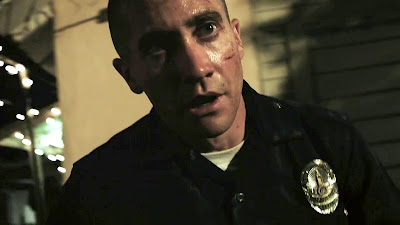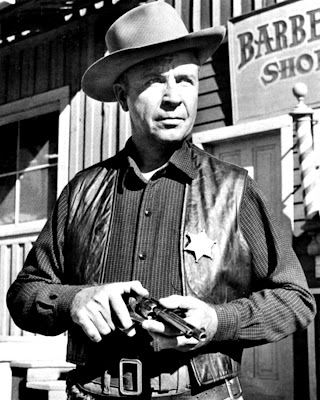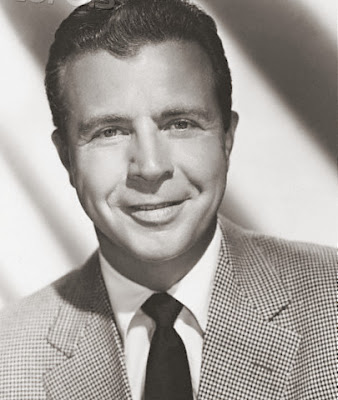 Happy 100th Anniversary, Gene Kelly!
Happy 100th Anniversary, Gene Kelly! Gene Kelly (23 August 1912 - 2 February 1996)
Gene Kelly (23 August 1912 - 2 February 1996) -"I took it as it came and it happened to be very nice." -Gene Kelly on his film career
-"I took it as it came and it happened to be very nice." -Gene Kelly on his film career Gene Kelly’s body of work still thrives and still thrills. With films that also include 'An American in Paris', 'Summer Stock', 'On the Town' and 'Brigadoon', Kelly revived the movie musical and redefined dance on screen, bringing with him an inspired sensibility and an original vitality. His choreography and his performances were relaxed but compelling, innovative but highly accessible and, ultimately, magical. He endeared himself to audiences and had a profound, eternal impact on the craft. Among the most beloved stars of Hollywood’s golden age, Kelly’s career remains one of the most surprising.
Gene Kelly’s body of work still thrives and still thrills. With films that also include 'An American in Paris', 'Summer Stock', 'On the Town' and 'Brigadoon', Kelly revived the movie musical and redefined dance on screen, bringing with him an inspired sensibility and an original vitality. His choreography and his performances were relaxed but compelling, innovative but highly accessible and, ultimately, magical. He endeared himself to audiences and had a profound, eternal impact on the craft. Among the most beloved stars of Hollywood’s golden age, Kelly’s career remains one of the most surprising. Solely responsible for creating a new approach to film musicals as performer, as choreographer and as director Kelly’s story has never been fully told. A creative genius fueled by single-mindedness, a volatile temper and narcissism, his need for perfection was uncompromising. A lasting influence in the worlds of film and dance, his first major film success came at the age of thirty and a short ten years later, he had made his final hit film. Kelly fought to expand the concept and reach of motion picture musicals, always keenly aware that he was beginning his film career well past his prime as a dancer. By the mid-1950s, Kelly found himself at loose ends the genre he helped master now over a victim of changing musical tastes and economic restrictions. 'Gene Kelly: Anatomy of a Dancer' offers a far more incisive view of the graceful and charming, beloved entertainer than that which the world has come to know.
Solely responsible for creating a new approach to film musicals as performer, as choreographer and as director Kelly’s story has never been fully told. A creative genius fueled by single-mindedness, a volatile temper and narcissism, his need for perfection was uncompromising. A lasting influence in the worlds of film and dance, his first major film success came at the age of thirty and a short ten years later, he had made his final hit film. Kelly fought to expand the concept and reach of motion picture musicals, always keenly aware that he was beginning his film career well past his prime as a dancer. By the mid-1950s, Kelly found himself at loose ends the genre he helped master now over a victim of changing musical tastes and economic restrictions. 'Gene Kelly: Anatomy of a Dancer' offers a far more incisive view of the graceful and charming, beloved entertainer than that which the world has come to know. Gene Kelly and Judy Garland in "For Me & My Gal" (1942) directed by Busby Berkeley
Gene Kelly and Judy Garland in "For Me & My Gal" (1942) directed by Busby BerkeleyIronically, Kelly was put under contract at Selznick International by Mayer’s son-in-law David O. Selznick, who had no interest in producing musicals and thought Kelly could exist purely as a dramatic actor. With no roles forthcoming, Kelly was loaned out to MGM to co-star with Judy Garland in 'For Me and My Gal'. The film was a hit and Selznick subsequently sold the actor and his contract to MGM.
 Gene Kelly and Rita Hayworth in "Cover Girl" (1944) directed by Charles Vidor
Gene Kelly and Rita Hayworth in "Cover Girl" (1944) directed by Charles VidorA series of mediocre roles followed and it was not until Kelly was loaned out to Columbia for 1944’s 'Cover Girl', with Rita Hayworth, that he became firmly established as a star.
 His landmark “alter ego” sequence, in which he partnered with himself, brought film dance to a new level of special effects. With Stanley Donen as his assistant, Kelly created a sense of the psychological and integrated story telling never before seen in a Hollywood musical. Realizing what they had, MGM refused to ever loan him out again, ruining Kelly’s opportunity to star in the film versions of 'Guys and Dolls', 'Pal Joey' and even 'Sunset Boulevard'. Back with producer Arthur Freed at MGM, Kelly continued his innovative approach to material by placing himself in a cartoon environment to dance with Jerry the Mouse in 'Anchor’s Aweigh' yet another musical first.
His landmark “alter ego” sequence, in which he partnered with himself, brought film dance to a new level of special effects. With Stanley Donen as his assistant, Kelly created a sense of the psychological and integrated story telling never before seen in a Hollywood musical. Realizing what they had, MGM refused to ever loan him out again, ruining Kelly’s opportunity to star in the film versions of 'Guys and Dolls', 'Pal Joey' and even 'Sunset Boulevard'. Back with producer Arthur Freed at MGM, Kelly continued his innovative approach to material by placing himself in a cartoon environment to dance with Jerry the Mouse in 'Anchor’s Aweigh' yet another musical first. Gene Kelly with wife Betsy Blair and daughter Kerry
Gene Kelly with wife Betsy Blair and daughter Kerry During his marriage to the actress Betsy Blair, Kelly was radicalized and the couple became well known for their liberal politics. In 1947, when the Carpenters Union went on strike and the Hollywood studios were looking for an intermediary to intervene on their behalf, Kelly was chosen much to everyone’s surprise. He traveled back and forth from Culver City to union headquarters in Chicago for two months, mediating a strike that was costing the studios dearly. When a settlement was finally reached, Kelly was shocked to learn that the studios felt it was unfair and that they had been cheated by his siding with the strikers. Naively and genuinely trying to help and unaware of unstated expectations, underhanded tactics, and slush funds Kelly’s efforts only resulted in further exacerbating his relationship with Louis B. Mayer.
During his marriage to the actress Betsy Blair, Kelly was radicalized and the couple became well known for their liberal politics. In 1947, when the Carpenters Union went on strike and the Hollywood studios were looking for an intermediary to intervene on their behalf, Kelly was chosen much to everyone’s surprise. He traveled back and forth from Culver City to union headquarters in Chicago for two months, mediating a strike that was costing the studios dearly. When a settlement was finally reached, Kelly was shocked to learn that the studios felt it was unfair and that they had been cheated by his siding with the strikers. Naively and genuinely trying to help and unaware of unstated expectations, underhanded tactics, and slush funds Kelly’s efforts only resulted in further exacerbating his relationship with Louis B. Mayer. Gene Kelly and June Allyson as D'Artagnan and Constance in "The Three Musketeers" (1948) directed by George Sidney
Gene Kelly and June Allyson as D'Artagnan and Constance in "The Three Musketeers" (1948) directed by George SidneyFinally, Kelly and Stanley Donen were assigned their own film to co-direct 1949’s 'On the Town'. In just five days of shooting selected sequences, they opened up the genre as no one had ever done before, creating another first a musical film shot on location. Followed by his two masterworks, 'An American in Paris', with its 17-minute ballet sequence, and 'Singin’ in the Rain', Kelly achieved icon status at the age of forty. In 1951, he was awarded a special Oscar for 'An American in Paris' for his “extreme versatility as an actor, singer, director and dancer, but specifically for his brilliant achievement in the art of choreography.”
 With Kelly’s own marriage to Betsy Blair in dissolution, both couples divorced and Kelly eventually married Jeanne Coyne in 1960. Small roles and directing jobs followed. Professional highlights included the Broadway musical “Flower Drum Song” and an original ballet he created for the Paris Opera. In the late 1950s, the television show OMNIBUS invited Kelly to create a documentary about the relationship between dance and athletics 'Dancing: A Man’s Game' is considered one of the classic treasures from television’s golden age.
With Kelly’s own marriage to Betsy Blair in dissolution, both couples divorced and Kelly eventually married Jeanne Coyne in 1960. Small roles and directing jobs followed. Professional highlights included the Broadway musical “Flower Drum Song” and an original ballet he created for the Paris Opera. In the late 1950s, the television show OMNIBUS invited Kelly to create a documentary about the relationship between dance and athletics 'Dancing: A Man’s Game' is considered one of the classic treasures from television’s golden age.  Yet, the potency of Kelly’s gifts, his remarkable achievements in dance and choreography and the creativity and charisma with which he exploded in a handful of films continues to endure and to inform. Gene Kelly’s final filmed words are from 1994’s That’s Entertainment III quoting Irving Berlin, he remarked: “The song has ended, but the melody lingers on.” Source: www.pbs.org
Yet, the potency of Kelly’s gifts, his remarkable achievements in dance and choreography and the creativity and charisma with which he exploded in a handful of films continues to endure and to inform. Gene Kelly’s final filmed words are from 1994’s That’s Entertainment III quoting Irving Berlin, he remarked: “The song has ended, but the melody lingers on.” Source: www.pbs.org Gene Kelly with his third wife Patricia Ward Kelly
Gene Kelly with his third wife Patricia Ward Kelly"One of the things that Gene discussed frequently was how he wished to be remembered. It was vital to him. He realized that he was known for being up on the screen and, particularly, for an iconic moment up on a lamppost. But what he really wanted was to be known for creating that scene and many others. He had worked assiduously to create a particularly American style of dance and to change the look of dance on film. He had opted not to return to Broadway as originally planned and, instead, decided to stay in Hollywood to “lick” the use of the camera in filming dance.
 Gene Kelly and Judy Garland in "The Pirate" (1948) directed by Vincente Minnelli
Gene Kelly and Judy Garland in "The Pirate" (1948) directed by Vincente MinnelliFor him, the camera was a “one-eyed monster,” that gave the viewer no peripheral vision and reduced a three-dimensional art form—dance—to the two dimensions of cinema. He was determined to find ways to fool the eye—to make the figures appear less flat using color and light (as in the ballet in 'An American in Paris'); with the kinetic energy of large, bold movement toward the camera (the "Singin’ in the Rain" number); and in blending live action and animation (dancing with Jerry the Mouse in 'Anchors Aweigh').
Song: Loreen - Euphoria
I was genuinely heartened to see how much of a lasting impact Kelly had had when I watched a documentary titled "Singin' in the Rain: Raining on a New Generation," which came attached to the sixtieth anniversary DVD of "Singin'." The documentary featured interviews with current stars like actors from the TV show "Glee," film directors Rob Marshall and Adam Shankman, and others, all effusively praising "Singin' in the Rain" and its dancing and how much we still owe Kelly today.
















































